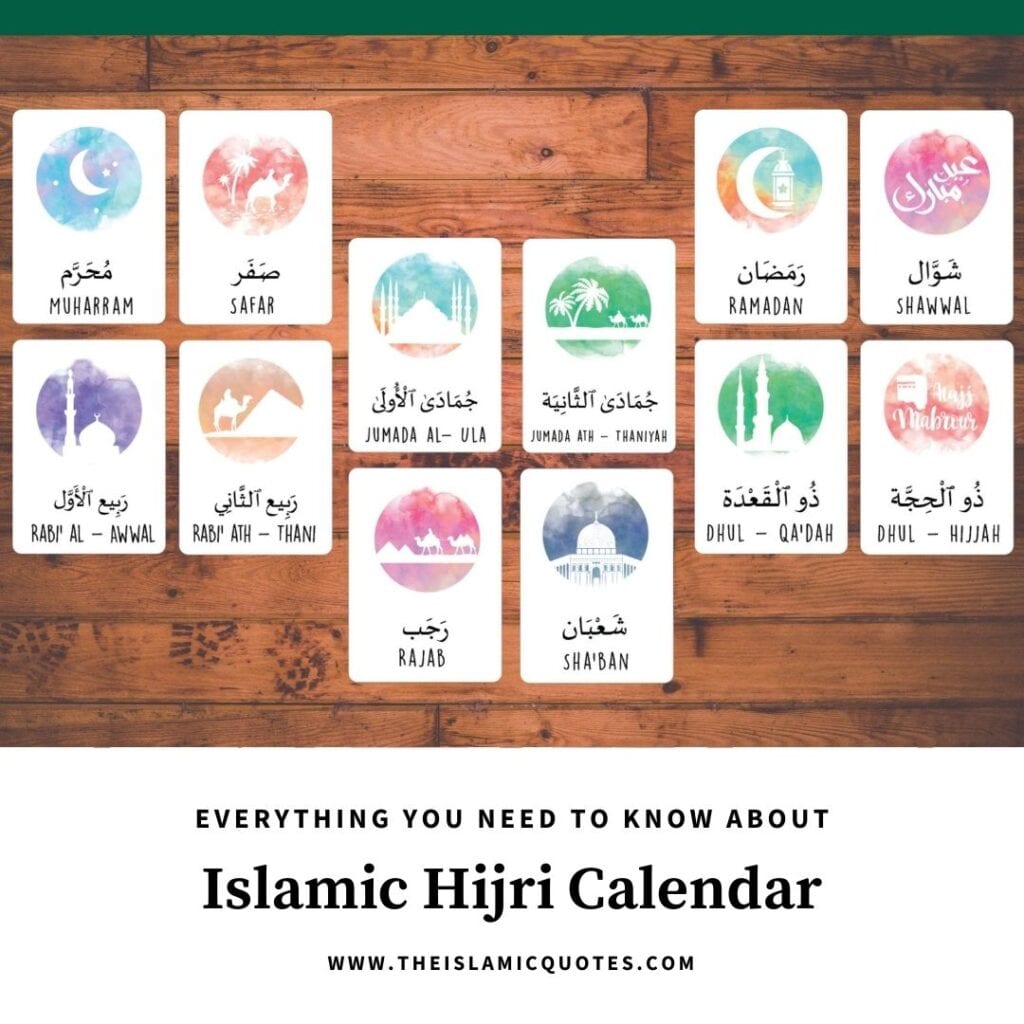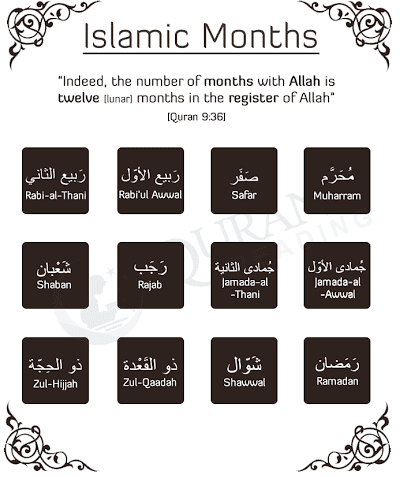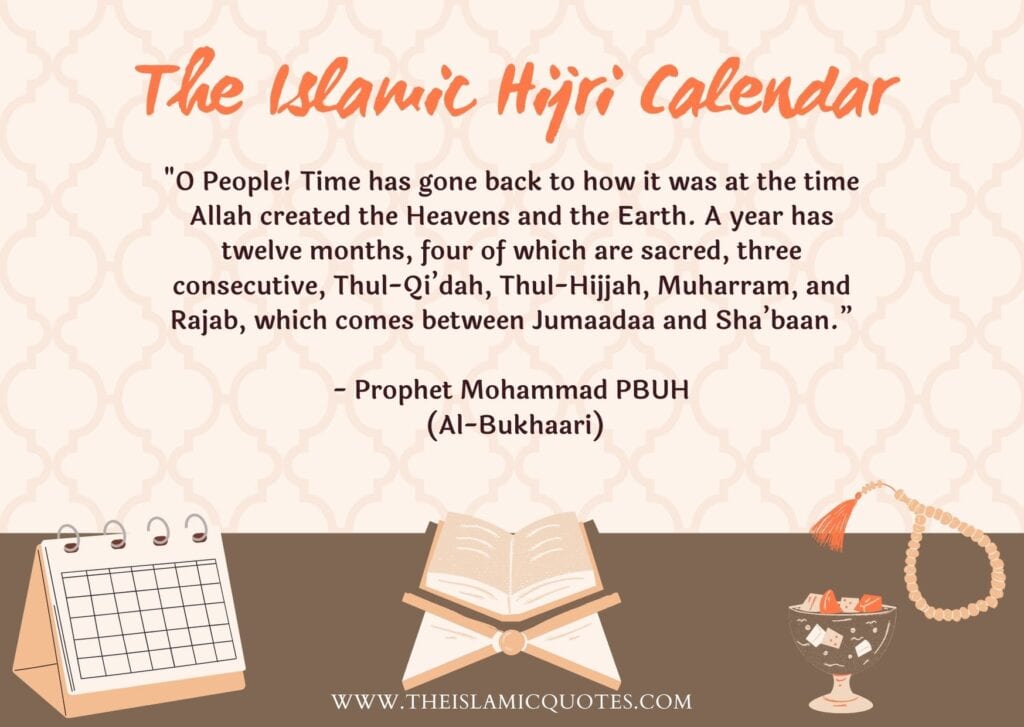Since the inception of time, Humans have built different mechanisms to calculate time. A calendar is one such tool that records the number of days in a month or year. Similarly, The Islamic Hijri Calendar is essential for the Muslim community, as it indicates many important events that hold great importance to the Muslim Ummah.
For example, the arrival of the month of Ramadan needs to be calculated precisely so that people can observe fasting and the month of Shawal, Zulkaedah highlights the celebration of the two Eids. The accurate calculation of these events is important as they are obligatory for Muslims to observe.
In this article – we will discuss 10 things that you need to know about the Islamic Hijri Calendar.
What is the Islamic Hijri Calendar?
There was no specific method to observe time before the Islamic Hijri Calendar. The only method used by Muslims was to name the years. The year in which Prophet (S.A.W.W) was born is named “Amil Fil” or the year of the Elephants. In this year, the king of Yemen “Abraha” sent an army of elephants towards the holy Kabah. The elephants were sent to destroy Kabah. in response to the elephants, Allah sent “Abil” birds to stone the elephants.

1. How and Why did the Hijiri Calendar Begin?
The Islamic Hijri Calendar was not established at the time of the Prophet (S.A.W.W). The second Caliph Umar ibn al Khattab initiated the process of its creation. He was concerned over the fact that Muslims are unaware of the calculation of time.
When he read letters from the Governor of the Basra that when the Governor receives letters from Umar ibn al Khattab. They are dated with months like Shaban, but they are unable to determine which one. The one that has passed or the coming one?
This is why Umar ibn al Khattab began the process of making a calendar for Muslims.
After taking consultation from his companions. The second caliph Umar ibn al Khattab decided that the year in which Prophet (S.A.W.W) migrated from Makkah to Madinah should be considered as the first year of the Muslim Hijri Calendar. The name “Hijri” is the literal definition of migration.
2. Why Is Muharram The First Month of The Hijri Calendar
The decision of making a calendar came with a question that which month should be declared as the first one. Many suggestions came in, but the emphasis was put on the 4 sacred months of Zulkaedah, Zulhijjah, Muharram, and Shaban.
Although many companions wanted “Ramadan to be the first month of the Islamic calendar, but Umar ibn Khattab suggested that Muharram is more appropriate as the Hajj concludes in the previous month (Zulhijjah) and it highlights a new beginning.
3. How Many Days Are There in The Hijri Calendar?
Unlike the lunar calendar that has 356 days – the Islamic Hijri calendar has 354 days with 12 months. In this time frame – the moon circles earth about 12 times. The difference between the lunar and Hijri calendar is of 11 days.
4. How Many Months In The Hijri Calendar?
There are twelve months in the Hijri Calendar. The names are;
• Muharram
• Safar
• Rabi’ul Awwal
• Rabi’ul Thani
• Jamadiul Awwal
• Jamadiul Thani
• Rajab
• Shaban
• Ramadan
• Shawal
• Zulkaedah
• Zulhijjah.
5. Mention of These Twelve Months In Quran
The Quran mentions these 12 months in the following verse.

6. Are There Any Sacred Months?
There are four sacred months in the Hijri Calendar. These four months are considered to be sacred because “Allah” has prohibited Muslims to wage war in these months. Muslims are also encouraged to fast during these months as per the sunnah, you can learn more on this from our previous post on Islamic Quotes on Sunnah Fasting & Its Benefits.
7. The Non-Sacred Months
The rest of the eight months are called nonsacred. Hence there are no restrictions on war in these months.
8. The Names of The Twelve Months and The Meanings
- Muharram
The first month of the Hijri Calendar translates to forbidden. Mostly because it is forbidden to wage war in this month by Allah.
- Safar
The second month of the Hijri Calendar is often labeled as an intense month as people are afflicted with problems. This is why scholars recommend that Muslims should give more Sadaqah during this month. According to some sources the second month is labeled as Safar as Arabs used to loot the valuables of their enemies during this month.
- Rabi’ul Awwal and Rabi’ul Thani
Rabi’ul Awwal and Rabi’ul Thani are marked as the arrival of spring where the victorious ones can enjoy the bounties that they have collected during the war. Muslims around the globe celebrate the birth of the Prophet (S.A.W.W) this month.
- Jammadiul Awwal And Jamadul Thani
These two months were named because of the winter period where the water channels would freeze. - Rajab
The month of Rajab indicated very sacred feelings of respect and honor.
- Ramadan
The month in which Muslims observe an obligatory ritual – Fasting. It was named Ramadan because temperatures used to rise exponentially.
- Shawwal
Shawal’s start marks a sacred event in the Hijri Calendar. Muslims observe Eid Ul Fitr after the month of Ramadan. It was named Shawal because of it being the season of “camel birthing”
- Zulkaedah
The month was named as such because of an Arab term that meant “sitting”. In this month Muslims should sit with peace and not indulge in any war.
- Zulhijjah.
The name is driven by the obligatory act: Hajj that is performed by Muslims in the holy city of Makkah. This month marks the end of the Muslim Hijri calendar and indicates that Muslims are done with their obligatory observation of the year such as Fasting, Hajj, and the two Eids.
9. Which States Follow the Islamic Hijri Calendar?
Muslims all over the world observe the Hijri Calendar – but they go hand in hand with the Lunar calendar. The only state that uses the Hijri Calendar as an official calendar in – Saudi Arabia.
The rest of the world, including many Muslim countries like Pakistan, Iran, Iraq do not follow The Islamic Hijri Calendar. They follow both – Lunar and Hijri Calendar. Observing holidays from both.
If you like exploring the cultures and traditions of other Islamic nations then you must read our post on Top 10 Muslim Countries You Should Visit.
10. Quotes About the Islamic Hijri Calendar
There’s mention of the hijri calendar in the following hadith:

